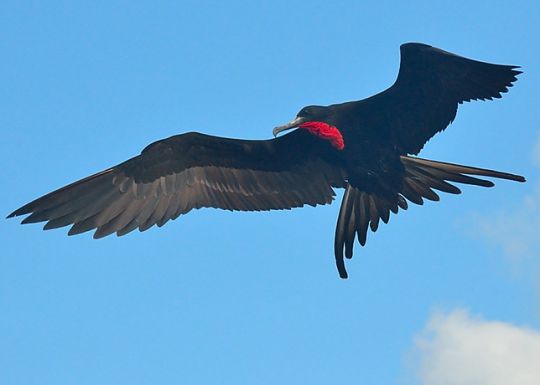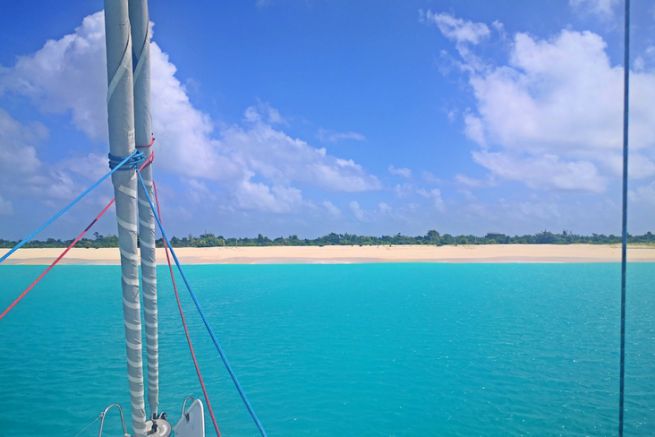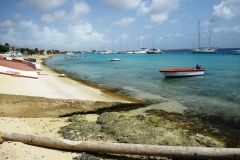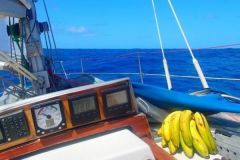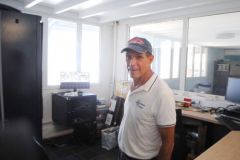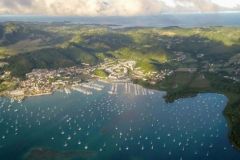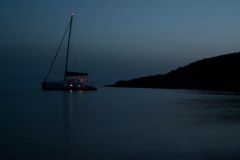The island of Barbuda, not to be confused with Barbados, is located on the eastern side of the Caribbean arc only 27 miles north of Antigua, on which it depends. But unlike her big sister, she is spared by mass tourism and leaves the impression of a lost paradise.
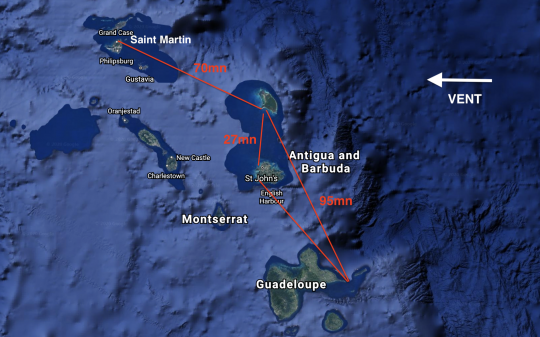
Barbuda is particularly flat, with an average of 4 m above sea level, its highest point is only 40 m. So don't be surprised to see this elevated atoll only at the last moment.
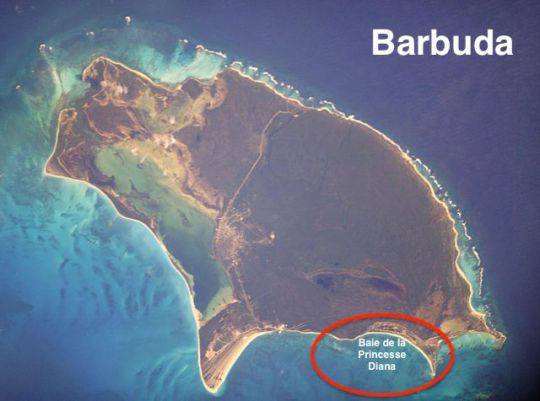
An island with an amazing heritage
Historically, Barbuda was a warehouse, a factory for its sugar plantations on the surrounding islands. It also served as a food reserve for the English. Thanks to its flat topography, the settlers cultivated all kinds of vegetables and fruits here. Breeding was also practised there. Even today, you can still see wild pigs, donkeys and, more surprisingly, many deer, which proves the existence of Santa Claus in the Caribbean.
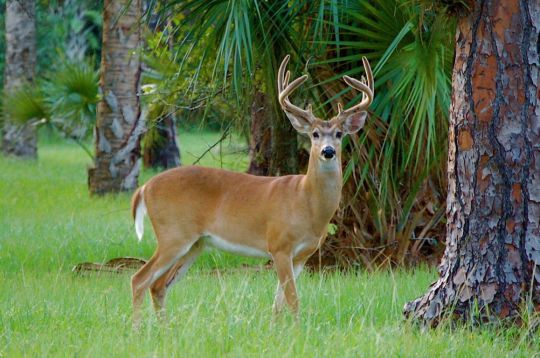
Sailing to Barbuda
To come to Barbuda from the island of Saint-Martin, 70 minutes away, it will probably be necessary to face the wind, we will choose if possible a relatively calm day, because under the squalls, the wind can quickly reach 30/40 knots. Coming from Guadeloupe located 110mn away, the navigation will be less demanding (crosswind or downwind).
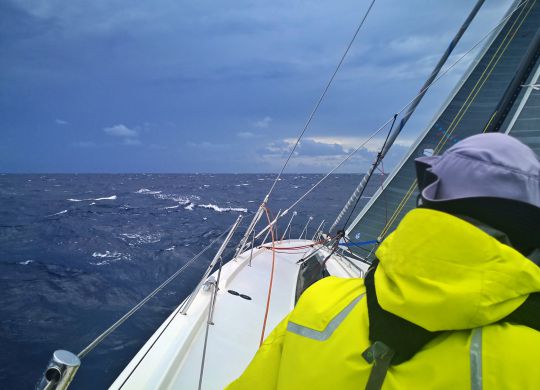
Sailing in the Caribbean can be a bit sporty under the squalls. On board the Pogo50, the wind increased to 40 knots upwind.
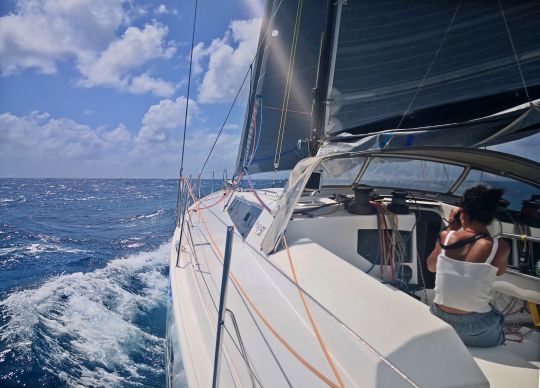
Fortunately, the squalls never last long and the wind is between 20 and 30 knots
The majority of boaters encountered on the island come from Antigua where they will have completed the entry formalities. An internet service allows to set up the formalities for entering the country and offers a significant time saving. However, Barbuda also has its own customs post for clearance. And for once in this small administrative office, the person in charge is particularly friendly and benevolent. The customs officer even came to pick us up on the beach with his 4X4 to take us to the village a few kilometers away.
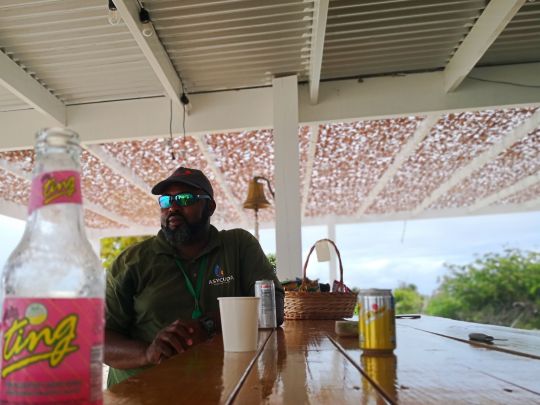
The only customs officer on the island meets us at the only beach bar on the island
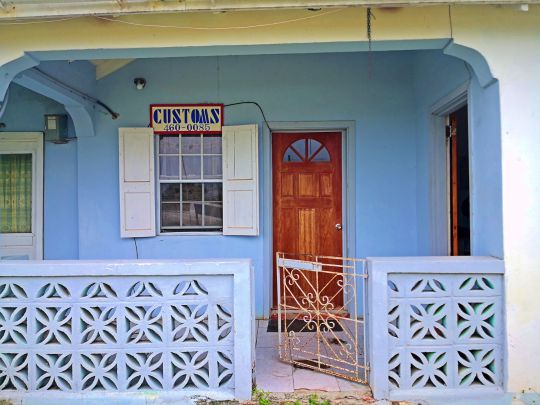
Paradise anchorages
There is no port in Barbuda, just a dock for the shuttle to Antigua. The island has many anchorages, but our favourite was in Princess Diana Bay in the south of the island. This leeward bay is perfectly protected from the sea swell, access from the north-west is easy even when arriving at night.
In front of the bow, a long white and pink sandy beach stretches for several kilometres. There are no more than 10 boats at anchor, which means that we are in the middle of our dream of a paradise island.
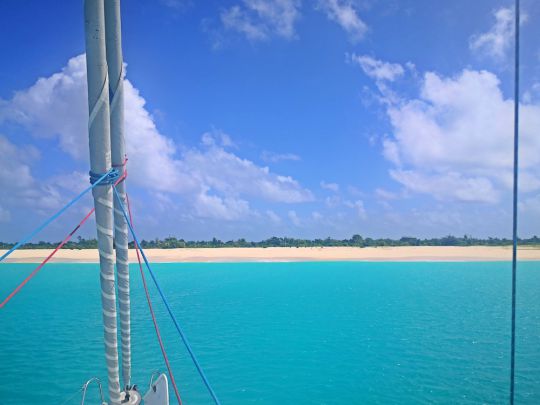
The sandy bottom is of very good holding and one will anchor by 4 to 5 m at the edge of the beach. There are a few coral heads to avoid, but the clarity of the water will allow them to be identified without any problem. If you arrive at night, as was the case with us, you should keep a little distance from the beach and take advantage of the early morning to get closer to the foreshore.
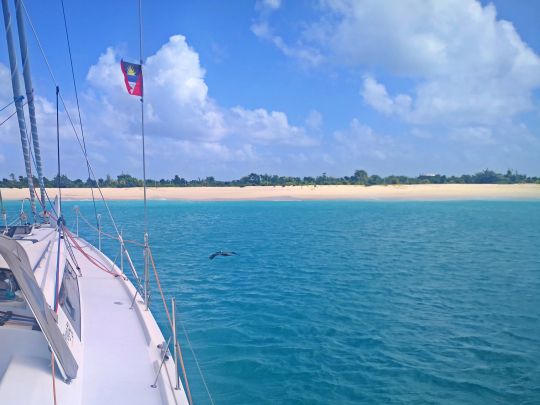
The southern end of the beach is a sandy tongue, as good for lazing around as it is for kitesurfing. You can also make some nice dives in the company of turtles and rays.
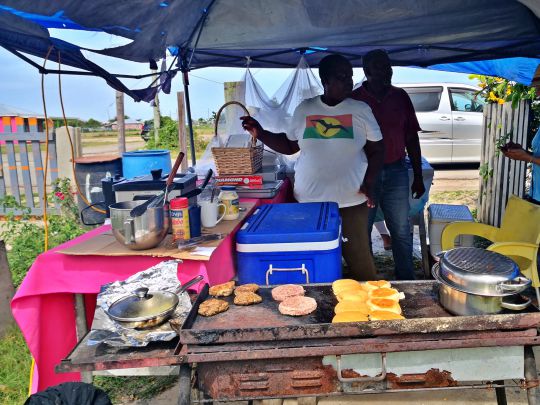
An island at the water's edge and 1500 Bearded Owls
Almost all the inhabitants, 1500 people, reside in the island's only village, Codrington. The locality is a little far from the anchorage, but the stop sign works well on this small atoll. It has to be said that the inhabitants are not invaded by tourists and their behaviour towards us is pleasant and welcoming.
Sometimes the locals stop by spontaneously and ask us if we need help. Conversation is easily engaged, often around Cyclone Irma, which destroyed almost all homes. Barbudians are proud of their island and their culture.

On the way to Codrington, you have to stop on the side of the road to eat a deer or Mahi-Mahi burger..
In the village, you will find enough supplies to complete the supply, but don't expect to find a mini-market. The small shops are supplied once or twice a week by a ferry. There is a gas station in the village for a possible breakdown service, but the cans will have to be transported to the boat. So you might as well take precautions before the port of call.
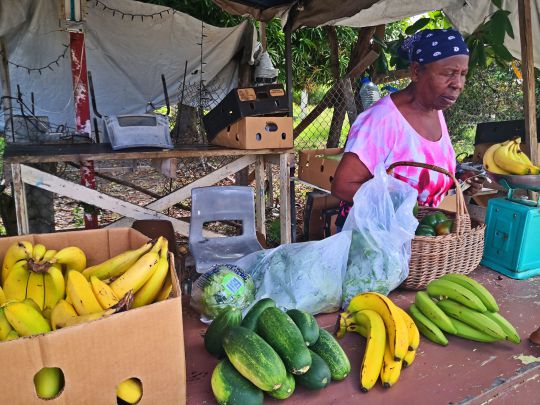
Excellent quality fruits and vegetables can be found in the small kiosks in the village
An island sanctuary
The island's lagoon is also famous for its nature reserve, which protects the largest colony of frigate birds, as well as brown pelicans, whistling ducks, warblers, snipe, ibis, herons, kingfishers, oystercatchers and cormorants. We will find some guides who will take us to observe these magnificent birds, we will have to ask Georges, probably the best guide on the island, it is a well of historical and ornithological knowledge
